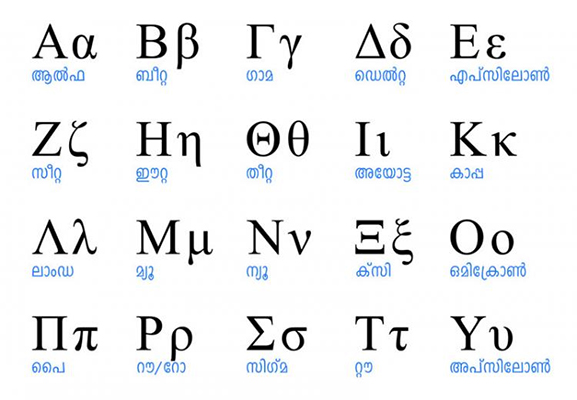The Greek alphabet is one of the most well-known writing systems in the world, with its distinctive characters appearing in a range of different contexts. From ancient Greek texts to modern scientific notation, the Greek alphabet has played a vital role in the development of human culture and knowledge. In this article, we will explore the history and structure of the Greek alphabet, as well as some of its most notable uses and adaptations.
The origins of the Greek alphabet can be traced back to the 8th century BCE, when the Greeks first began to adopt the Phoenician alphabet, which had been developed by the ancient Semitic peoples of the eastern Mediterranean. However, the Greeks soon began to modify the Phoenician script, adding new letters and changing the shapes of existing ones to better suit their own language and culture.
The Greek alphabet originally consisted of 27 letters, with the addition of one more letter (the letter eta) coming later. These letters were arranged in a fixed order, known as the alphabet’s “sequence”. This sequence has remained largely unchanged to this day, with the 24-letter Greek alphabet still used by millions of people around the world.
One of the most distinctive features of the Greek alphabet is its use of “case”. Like the Latin alphabet that it would later inspire, the Greek alphabet has two distinct sets of characters: uppercase (or “capital”) letters, and lowercase (or “small”) letters. However, unlike the Latin alphabet, which uses capital letters primarily for the beginning of sentences and proper nouns, the Greek alphabet uses case to distinguish between different grammatical functions. For example, the Greek language has a separate set of endings for nouns and adjectives that are used only in the lowercase form.
Another notable feature of the Greek alphabet is its use of diacritical marks, which are special symbols added to letters to indicate changes in pronunciation or meaning. For example, the Greek letter omega (ω) can be written with a circumflex accent (ô) to indicate a different pronunciation, while the letter iota (ι) can be written with a diaeresis (ï) to indicate a change in vowel sound.
The Greek alphabet has played a significant role in the development of Western culture, particularly in the fields of science, mathematics, and philosophy. Many important works of ancient Greek literature, such as the Iliad and the Odyssey, were written using the Greek alphabet, and this writing system has been used to record important scientific and mathematical discoveries throughout history.
In modern times, the Greek alphabet continues to be used in a variety of contexts. For example, it is commonly used in the naming of fraternities and sororities, as well as in scientific notation to represent variables and constants. In addition, the Greek language remains an important part of the cultural heritage of Greece and other parts of the Mediterranean, with millions of people around the world still speaking and writing in Greek today.
Overall, the Greek alphabet is a testament to the ingenuity and adaptability of human beings. By modifying and refining an existing writing system, the ancient Greeks were able to create a new tool for communication and expression that has endured for thousands of years. Today, the Greek alphabet remains a powerful symbol of the rich cultural and intellectual legacy of Greece and the Mediterranean world.
![]()





